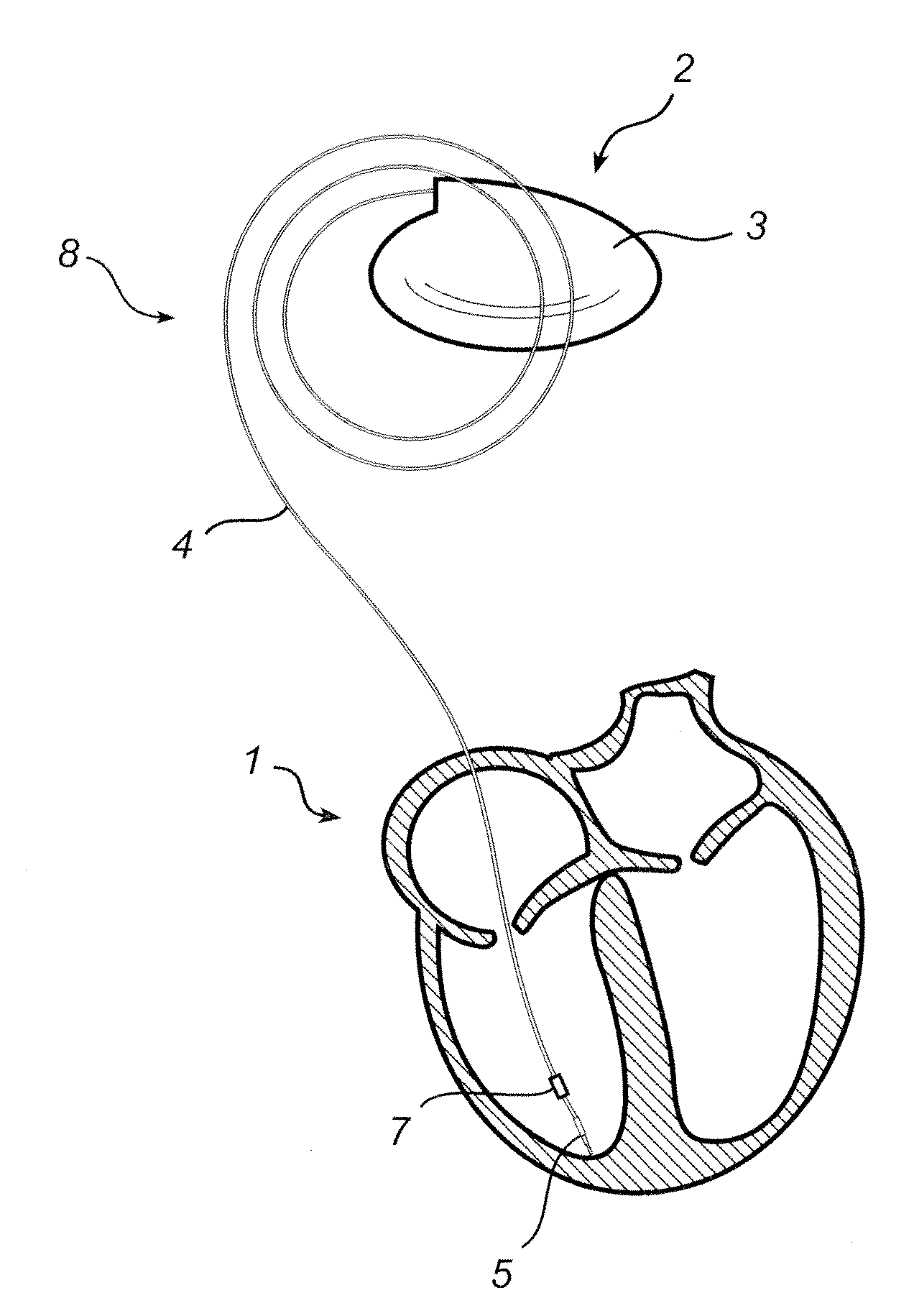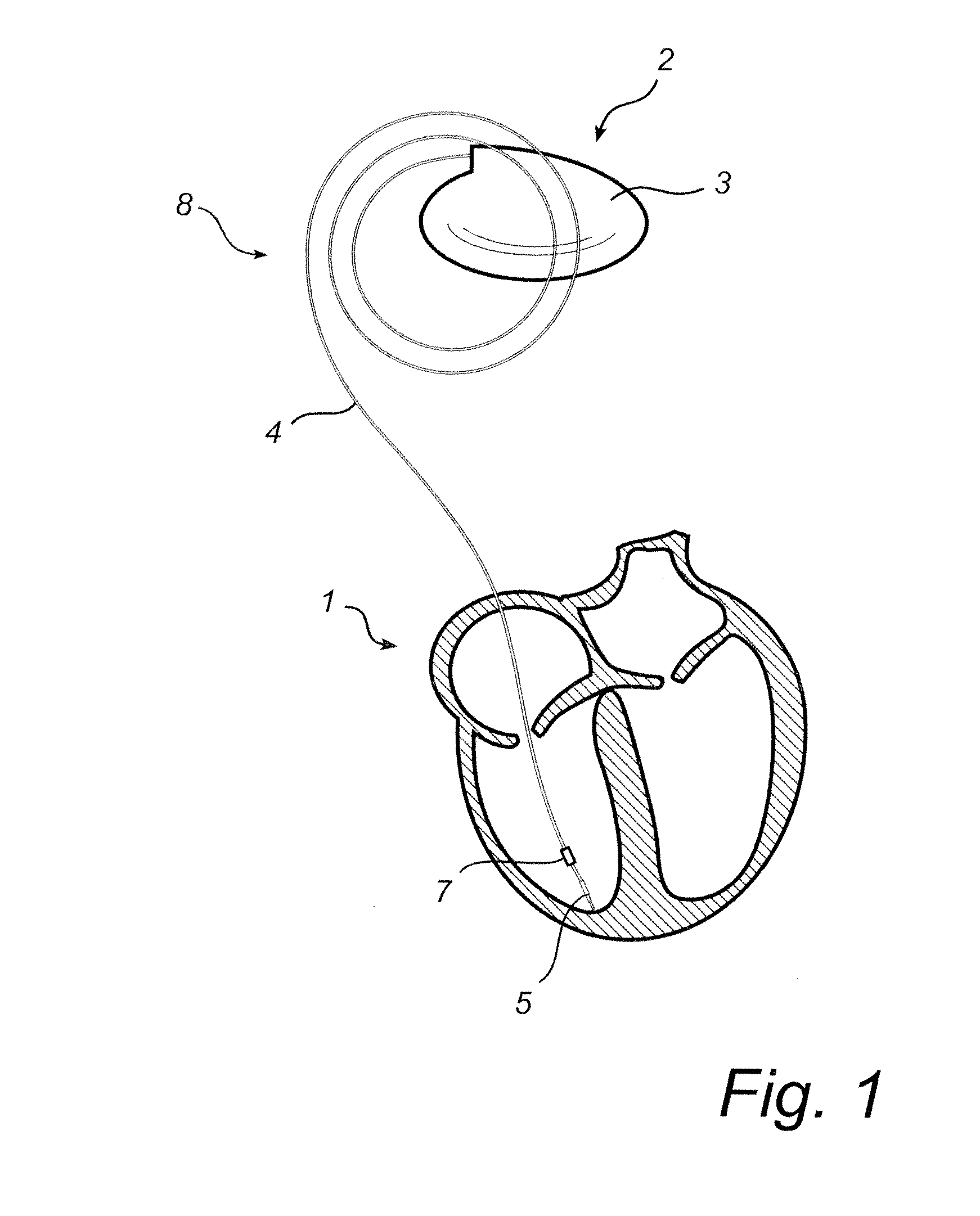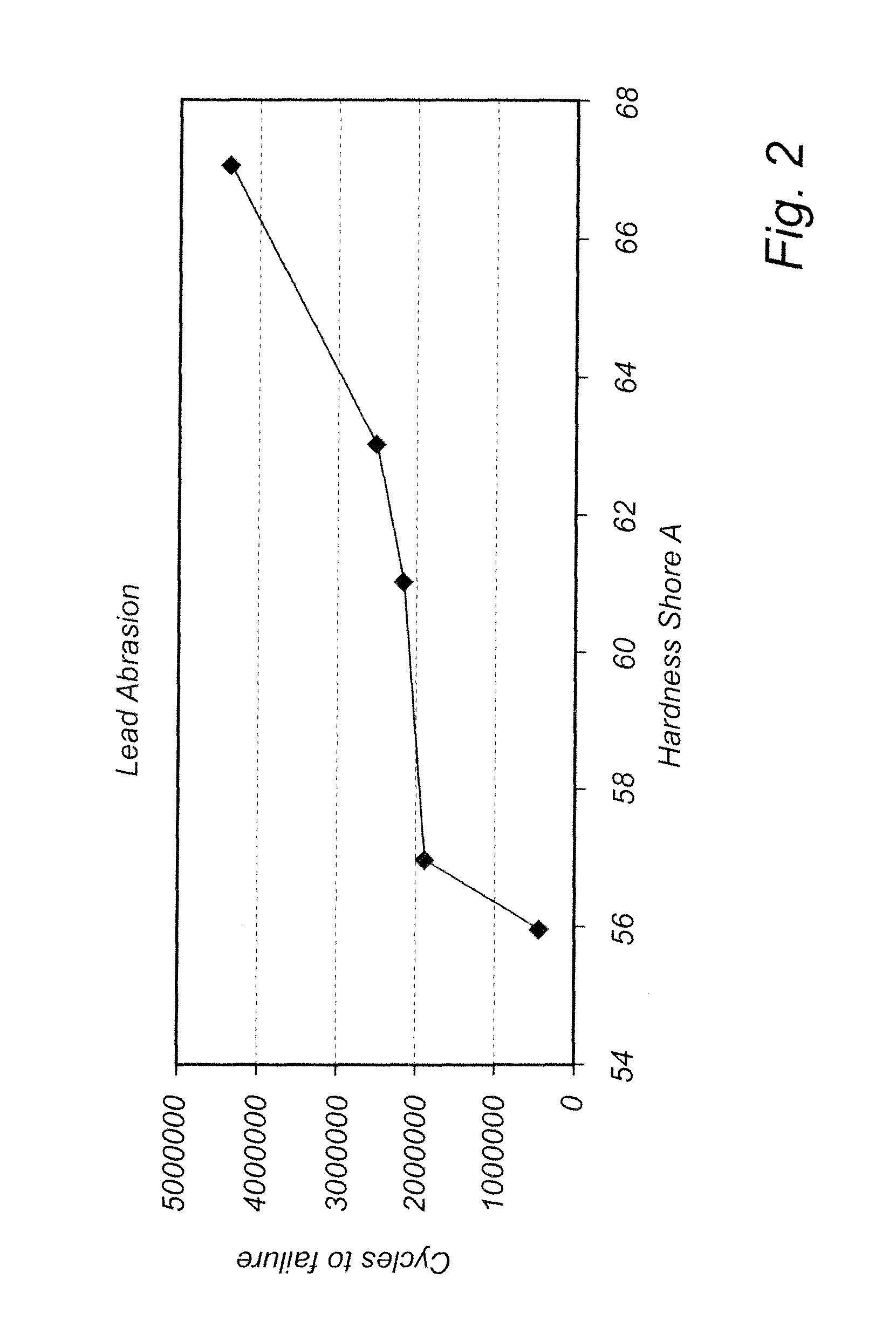Implantable medical lead and method for manufacture thereof
a technology of medical leads and medical devices, applied in the field of implantable medical leads, can solve the problems of abrasion or wear of the lead portion that is in contact with the medical device, stressing the distal end, and damage to the tissu
- Summary
- Abstract
- Description
- Claims
- Application Information
AI Technical Summary
Benefits of technology
Problems solved by technology
Method used
Image
Examples
experiment 1
[0042]FIG. 2 presents experimental information showing that the hardness property and abrasion resistance property are related. The test result which relates to a silicone elastomer shows that within a group of otherwise chemically identical, the abrasion resistance increases with increasing hardness. The silicone elastomer or rubbers were cured and post-cured to achieve a specific hardness (Shore A). These were then tested in an abrasion test apparatus, which by St. Jude Medical internally is designated ES-1907 rev X1, designed for measuring the abrasion resistance of pacemaker lead bodies. For this type of abrasion, it has thus been demonstrated that harder materials, of otherwise identical composition as that of the present invention, have greater resistance to abrasion. Thus, it is beneficial to provide softness in the tip for flexibility, but retain hardness in the proximal end to optimize abrasion resistance.
experiment 2
[0043]In FIG. 3, test results for a material according to an embodiment of the present invention, similar to that of the experiment 1, is shown. The graph in FIG. 3 presents abrasion resistance results on a pacemaker lead body made of an Elast-Eon material, more specifically an Elast-Eon 2A material. This material is provided by Aor-Tech. The purpose of such an experiment is to simulate the wear situation of a medical lead in abutment with a medical device can when implanted. The experiment was similarly performed as experiment 1 in the way that the material was first subjected to heat treatment followed by an abrasion test. The abrasion test was performed according to a St. Jude Medical internal test method called 60010764 rev P02. The result shows that the lower hardness material, i.e. less stiff as indicated by lower Young's modulus, from a heat treatment at 120 C / 6 hrs has a lower abrasion resistance compare to material treated at 85 C / 4 h that has higher stiffness / hardness / modu...
experiment 3
[0045]FIG. 4 shows the relationship between stiffness, indicated by Young's Modulus, and treatment temperature of a polymer sheet material according to an embodiment of the invention. The experiment was performed by first heat treating an Elast-Eon 2A material in a conventional oven. In FIG. 4, the name Optim is used which is a name of the Elast-Eon 2A material used at St. Jude Medical. Thereafter, the stiffness was then measured by a conventional apparatus for measuring tensile properties of stress versus strain. Lloyd Instruments LRX plus ExT with 10N load cell tested on tubing in a mandril clamp with 100 mm gauge length. The graph shows that a higher treatment temperature results in a lower stiffness of the polymer material or Elast-Eon 2A provide by Aor-Tech.
Heat Treatment Process
[0046]As is understood by the skilled person in the art, the heat treating process according to the present invention may be performed in number of alternative ways. In an example method for manufacturi...
PUM
| Property | Measurement | Unit |
|---|---|---|
| temperature | aaaaa | aaaaa |
| temperature | aaaaa | aaaaa |
| temperature | aaaaa | aaaaa |
Abstract
Description
Claims
Application Information
 Login to View More
Login to View More - R&D
- Intellectual Property
- Life Sciences
- Materials
- Tech Scout
- Unparalleled Data Quality
- Higher Quality Content
- 60% Fewer Hallucinations
Browse by: Latest US Patents, China's latest patents, Technical Efficacy Thesaurus, Application Domain, Technology Topic, Popular Technical Reports.
© 2025 PatSnap. All rights reserved.Legal|Privacy policy|Modern Slavery Act Transparency Statement|Sitemap|About US| Contact US: help@patsnap.com



